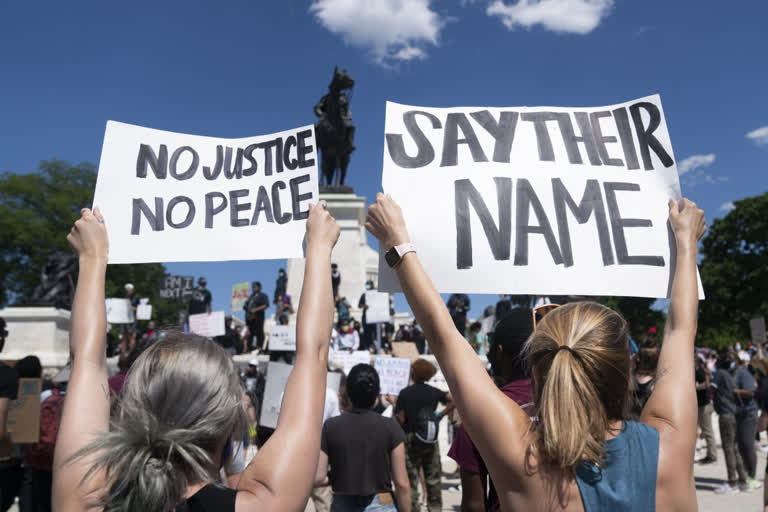Washington: A metal fence built this month around the White House was removed, but many of the anti-racism posters and art that adorned the 'wall' will become museum pieces and kept for possible exhibitions on protests.
At the stroke of midnight on Wednesday, the Secret Service opened two panels and announced that Lafayette Square surrounding the White House was now 'open' to the public, and on Thursday morning agents had removed most of the metal fence.
The barricades were erected more than a week ago after security forces dispersed protesters from the square with tear gas so that President Donald Trump could walk from the White House to the nearby church and pose for a picture with a Bible in his hand.
Many protesters were angered by the decision to widen both the perimeter around the White House and the lack of access to Lafayette Park, but they soon turned the over two-metre-high fence into a canvas on which they have hung their anti-racism posters and art.
The Smithsonian Institution, which has nine museums in the capital, took note of this makeshift mural and on Thursday announced that three of its galleries have formed a coalition to document, collect and preserve the expressions of protest and hope from Lafayette Square in Washington, DC.
"It is critical that we collect so this moment does not get lost," the Smithsonian National Museum of African American History and Culture (NMAAHC) curator Aaron Bryant said.
Read more: Street outside WH named 'Black Lives Matter Plaza'
Bryant and eight other commissioners visited the surroundings of the White House on Wednesday to identify the items they wanted to preserve, write down the names of artists and photographers and speak to several of the protesters who were still wandering around the area despite the fact that the protests have decreased in the last days.
"We talk to people so we don't forget their stories. History is happening right before us," said Bryant.
When the commissioners arrived, most of the posters were no longer on the metal fence of Lafayette Square. Due to rumours that the gates would be torn down, a group of volunteers moved them to an area next to the park, sticking them on a wall that is part of a construction zone.
The museums involved in the project are the NMAAHC, the National Museum of American History, and the Anacostia Community Museum. Anacostia is a predominantly African-American neighbourhood in southern Washington.
"At this stage, the Smithsonian cannot confirm which objects will become a part of its official collection," the institution said in a statement.
The statement added, "The goal of the project is to recognize that the tragic killing of George Floyd has spurred a transformative time in US history and that the world, in the present and future, can understand the role that race has played in our complicated 400-year history since the beginning of slavery."
The museums have also asked those who participated in the demonstrations to keep those objects that may be of interest to the museum and to send them photographs to see if they can fit into the curators' project.
Also read: Curfew in Washington after protests near White House
(With inputs from IANS)



